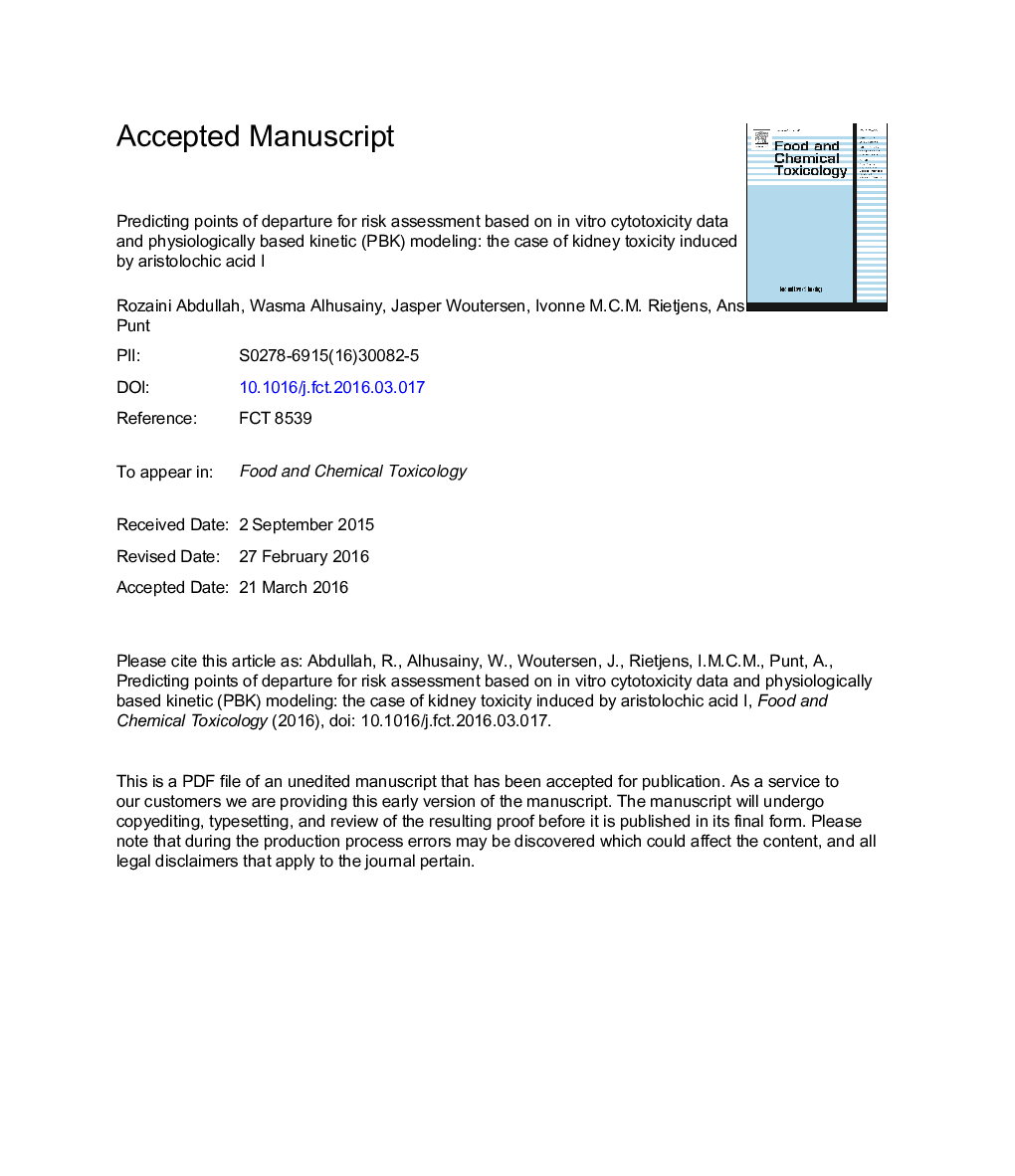| Article ID | Journal | Published Year | Pages | File Type |
|---|---|---|---|---|
| 5849335 | Food and Chemical Toxicology | 2016 | 53 Pages |
Abstract
Aristolochic acids are naturally occurring nephrotoxins. This study aims to investigate whether physiologically based kinetic (PBK) model-based reverse dosimetry could convert in vitro concentration-response curves of aristolochic acid I (AAI) to in vivo dose response-curves for nephrotoxicity in rat, mouse and human. To achieve this extrapolation, PBK models were developed for AAI in these different species. Subsequently, concentration-response curves obtained from in vitro cytotoxicity models were translated to in vivo dose-response curves using PBK model-based reverse dosimetry. From the predicted in vivo dose-response curves, points of departure (PODs) for risk assessment could be derived. The PBK models elucidated species differences in the kinetics of AAI with the overall catalytic efficiency for metabolic conversion of AAI to aristolochic acid Ia (AAIa) being 2-fold higher for rat and 64-fold higher for mouse than human. Results show that the predicted PODs generally fall within the range of PODs derived from the available in vivo studies. This study provides proof of principle for a new method to predict a POD for in vivo nephrotoxicity by integrating in vitro toxicity testing with in silico PBK model-based reverse dosimetry.
Keywords
NOAELBMCLPBKaristolochic acid IIBMDLLOAELTDIAAICmaxaristolochic acid IAUCADIAANRisk assessmentAristolochic acidmaximum concentrationAcceptable daily intakePodsphysiologically based kineticPhysiologically based pharmacokinetic (PBPK) modelKidney toxicityTolerable daily intakearea under the curvearistolochic acid nephropathyAAIINo observed adverse effect levelLowest observed adverse effect level
Related Topics
Life Sciences
Agricultural and Biological Sciences
Food Science
Authors
Rozaini Abdullah, Wasma Alhusainy, Jasper Woutersen, Ivonne M.C.M. Rietjens, Ans Punt,
